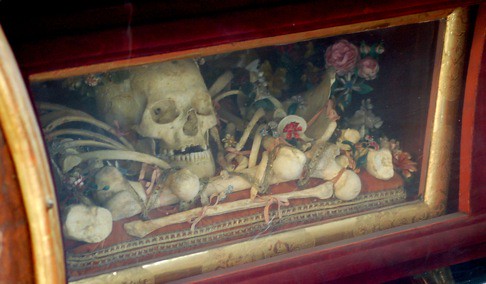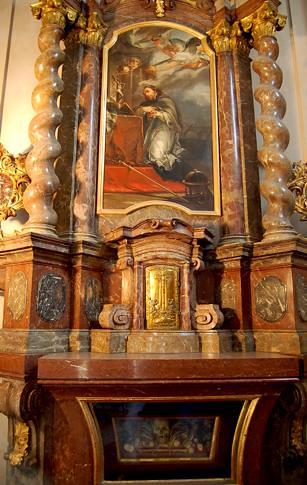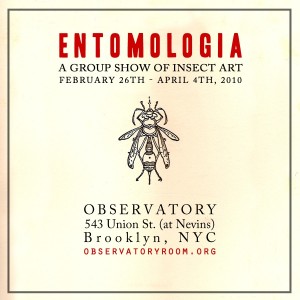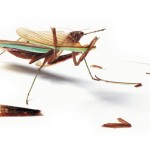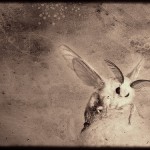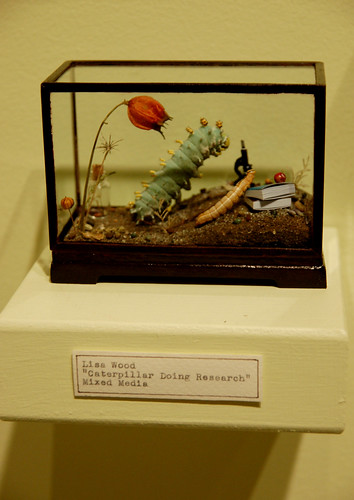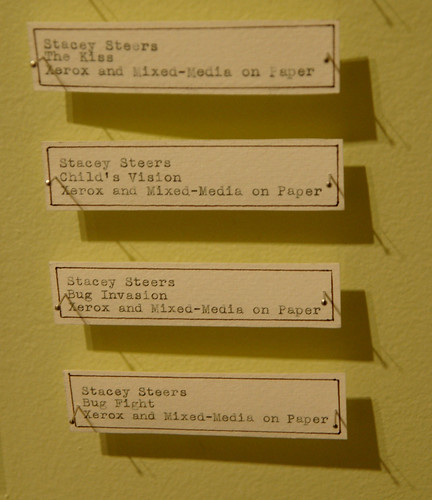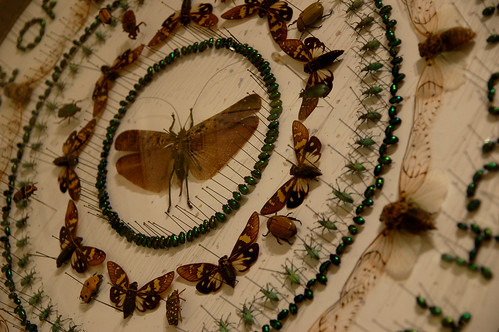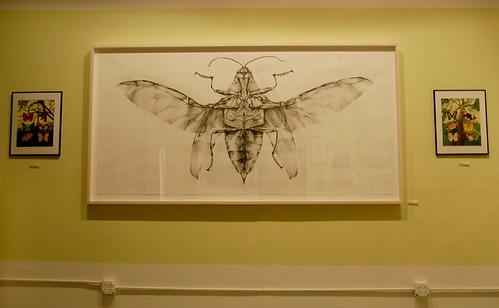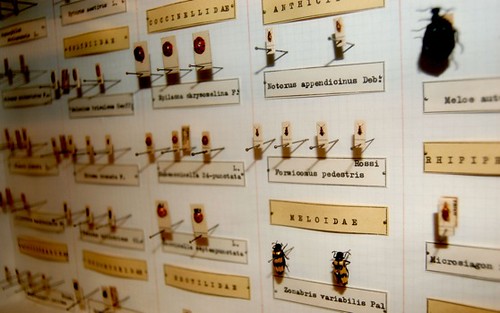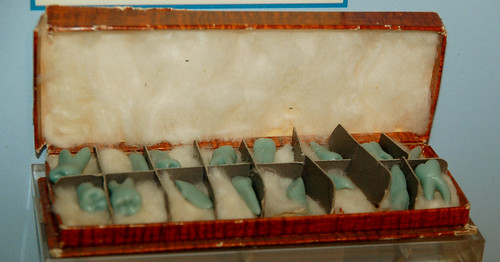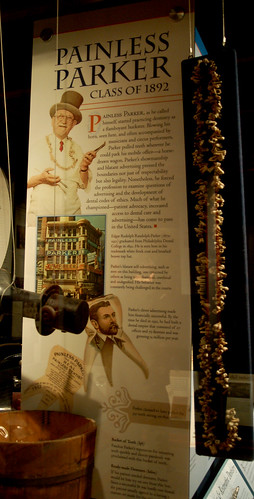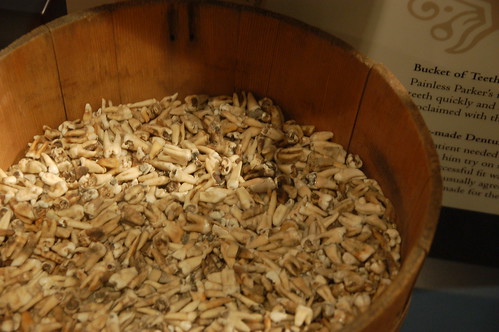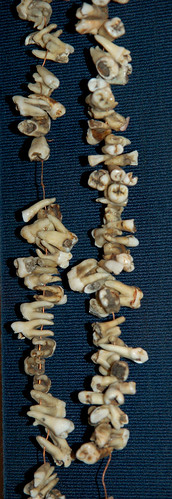[Most Recent Entries] [Calendar View] [Friends]
Below are the 7 most recent journal entries recorded in
Curious Expeditions' InsaneJournal:
| Thursday, September 16th, 2010 | |
| 8:53 pm | Hollow Bones On offer today we have a short personal interlude – last month D and I were asked to curate an installation of our art and objects from our personal collection for The Widow’s Watch, an art salon in the back room of one of our favorite curiosity purveyors, Kill Devil Hill in Brooklyn. We decided on the theme of birds, and everything fell into place from there. We took down the show last week, but it lives on in pictures. Join us on a journey through a small wunderkammer devoted to and inspired by those strange alien creatures, birds.
|
| Thursday, November 4th, 2010 | |
| 9:47 pm | From the Voyage Vaults, Object No. 30 Just as I was about to head out the door of the tourist-filled St. George’s Basilica in the Prague Castle (Pražský hrad), I found myself face to face with a skull and pleasingly arranged assortment of bones. I snapped a few quick pictures as a guard yelled at me in Czech before sheepishly scurrying away. I just love this skeletal display – and for the life of me I cannot figure out whose bones these are. I’ve tracked down sources claiming it is the relic of St. Adalbert, St. Ludmila, and Prince Vratislav I. St. Ludmila seems to be the best guess- her remains definitely seem to be in the basilica, although it is still unclear as to whether she is encased in a tomb, or is indeed the decorated skeleton on display. St. Ludmila was supposedly the grandmother of Good King Wenceslaus (so good he was immortalized forever in the dreary Christmas song). She had great influence over young Wenceslaus, who began ruling Bohemia at the gentle age of 8, which which induced rage and jealousy in the young ruler’s mother, Drahomíra. On September 15, 921, Drahomíra had St. Ludmila strangled with her own veil by two noblemen. Around the year 1100, her remains were moved to St. George’s Basilica – and quite possibly into a small glass window, tied with pink ribbons and surrounded by silk flowers. I’m throwing in a photo of these smaller relics, also from St. George’s Basilica. I just love the work that goes into bestowing a few unremarkable, tiny bone fragments with the pomp and circumstance fitting of a venerated saint. |
| Thursday, February 11th, 2010 | |
| 4:45 pm | Entomologia: A group show of insect art We are extremely excited to announce Entomologia, a group show of insect art; curated by our very own Michelle Enemark and on view at our event/gallery space, Observatory. We believe that science and art are intrinsically linked. “Entomologia” aims to celebrate the 18th century idea that knowledge and artistic interpretation went hand in hand through the lens of one of nature’s most otherworldly and alien creatures; the insect. We hope to see you there!
Opening Party: Friday, February 26; 7:00 – 10:00 OBSERVATORY and Curious Expeditions’ Michelle Enemark are delighted to announce “Entomologia,” a group show of art incorporating and inspired by insects, on view from February 26th through April 4th. “Four years of hard work in the darkness, and a month of delight in the sun – such is the Cicada’s life. We must not blame him for the noisy triumph of his song. For four years he has dug the earth with his feet, and then suddenly he is dressed in exquisite raiment, provided with wings that rival the bird’s, and bathed in heat and light. What cymbals can be loud enough to celebrate his happiness, so hardly earned, and so very, very short?” -Jean Henri Fabre PARTICIPATING ARTISTS: Jennifer Angus, Joianne Bittle, Catherine Chalmers, Joanna Ebenstein, Michelle Enemark, Judith Klausner, Barrett Klein, Shanna Maurizi, Herbert Pfostl, Brian Riley, Stacey Steers, Steve Thurston, James Walsh, Lisa Wood ENTOMOLOGIA EVENTS DURING THE RUN OF THE SHOW
ABOUT OBSERVATORY: ABOUT THE CURATOR: ADDITIONAL CURATION: |
| Monday, March 8th, 2010 | |
| 7:49 pm | Entomologia Lecture Series This Month The opening night of the show I curated, Entomologia, was a great success! Thank you to all who made it out despite the snowstorm that night. Here are a few images from the show. There is still plenty of time to visit, Entomologia will be up until April 4th, and we have some wonderful insect-themed events during the run of the show with our Entomologia lecture series. If you are in the New York area, please join us at Observatory in Brooklyn for an evening of bugs and art. Lisa Wood, Caterpillar Doing Research, mixed media This Friday, March 12 at 8:00, artist Catherine Chalmers will screen two of her incredible short films Safari and We Rule and will talk about her experience working with the cast of characters – insects – both in her New York studio and on location in Costa Rica. The following Friday, March 19 at 8:00, Joianne Bittle will present an illustrated lecture on her work at the American Museum of Natural History as a diorama artist. She will also talk about her series of beetle paintings, A Royal Family, which were the result of six years of observing, from life, four different types of beetle specimens. Saturday, April 3 at 8:00, Shanna Maurizi will give an illustrated lecture on the nether regions of genetic engineering and transgenics, molecular biology, and military cybernetics. Entomologia show labels Jennifer Angus, Victorian Fancy (detail), insects, pins, digital print Joianne Bittle, Jewel Beetle (ventral side), graphite on paper, Steve Thurston, Misc African Lepidoptera I & II, watercolor and gouache Michelle Enemark, Entomologia Cabinet, insects, brass, wood, ink & Insect Reference Library More images of Entomologia can be seen here. |
| Wednesday, March 10th, 2010 | |
| 6:23 pm | From the Voyage Vaults, Object No. 29 March is insect month here at Curious Expeditions in celebration of our group art show, Entomologia, up until April 4th at Observatory! La Specola in Florence, Italy, is most famous for its world class collection of 18th century wax anatomical models. But Europe’s oldest science museum (open to the public in 1775) also has an incredible collection of taxidermy and specimens. This marvelous museum is often found empty, even in Florence’s most crushing tourist months, when the lines to see the David last for blocks. The museum’s collection began as the personal wunderkammer of the Medici family. Grand Duke Peter Leopold, embracing the Enlightenment, decided to open this private collection to the general public – men and women, rich and poor – no one was to be excluded from indulging in scientific curiosity. In a time when cabinets of wonder were private and restricted to the upper crust, those could afford the time and money to engage in exotic collecting, this the Grand Duke’s novel idea inspired other institutions to open their doors to the public. |
| Sunday, July 25th, 2010 | |
| 2:23 am | An Ocean of Bottles Dear readers, this absence of late is unforgivable! But if we may plead our case, we (D and M) have had a most busy of years, with D working on the Atlas Obscura, and M making her way in the world of freelance motion graphics/animation. Though we are thrilled with the things we’ve been up to, there hasn’t been much time (or funding) for travel. It certainly makes keeping up with Curious Expeditions more difficult. But know this! There are big plans for travel on the horizon – and with it will come renewed posting here on Curious Expeditions. In the meantime we will be doing our best to post from our past travels, as well as places we love here in New York and the surrounding area. One of our favorite places in Brooklyn is Dead Horse Bay. M wrote about Dead Horse Bay on the Atlas Obscura – for more information on how to get there, head over to Atlas Obscura for the details.(Modified from the original version written for Atlas Obscura.) Thousands upon thousands of bottles, broken and intact, many over 100 years old litter the shore. Though other hardy bits of trash pepper this beach of glass: leather shoe soles, rusty telephones, and scores of unidentifiable pieces of metal and plastic. The beach is usually empty, conjuring a quiet, eerie post-doomsday kind of scene that is the perfect setting for scavenging another era’s trash. Like most of New York City, Dead Horse Bay has a long history of changes. Over the years, much of old New York has been torn down, replaced, torn down again, and replaced again by new buildings and people, and the layers of history are all but forgotten. Not true at Dead Horse Bay, where remnants of the past litter the beach today. Along Millstone Trail near the bay, a millstone is left over from the 17th century, when Dutch settlers used the water for tide mills to grind wheat into flour. The bay was given its name sometime in the 1850s, when horse-rendering plants still surrounded the beach. From the New York Times: “Dead Horse Bay sits at the western edge of a marshland once dotted by more than two dozen horse-rendering plants, fish oil factories and garbage incinerators. From the 1850′s until the 1930′s, the carcasses of dead horses and other animals from New York City streets were used to manufacture glue, fertilizer and other products at the site. The chopped-up, boiled bones were later dumped into the water. The squalid bay, then accessible only by boat, was reviled for the putrid fumes that hung overhead.” As the car industry grew, horse and buggies — thus horse carcasses — became scarce, and by the 1920s, there was only one rendering plant left. It was during this era, around the turn of the century, that the marsh of Dead Horse Bay’s began to be used as a landfill. Filled with trash by the 1930s, the trash heap was capped, only to have the cap burst in the 1950s and the trash spew forth onto the beach. Since then garbage has been leaking continually onto the beach and into the ocean from Dead Horse Bay. Of the leaking garbage, what has stayed in tact over 60 years of rolling around in the ocean are namely bottles. So very many bottles. Though we were lured to Dead Horse Bay by friends under the promise of bottle scavenging, it was the atmosphere of the place which truly captured our fascination. D and I marveled – under the weight of our bag laden with old bottles – at the fairytale sound of clinking glass as the gentle waves shifted them about. There’s no place quite like it; and in its quiet feeling of apocalypse, Dead Horse Bay is mysteriously peaceful. The horses aren’t quite gone either; found throughout the bay are one inch chunks of horse bone, a somewhat unpleasant reminder of Dead Horse Bay’s pungent past. D and I figured we’d better grab one of those as well, and the bone chunk sits, a venerated piece of century-old trash, under a glass dome in our apartment. |
| Monday, February 8th, 2010 | |
| 10:00 pm | Painless Parker’s Dental Circus Show girls, singing and dancing. A band with blasting bugles. A dental chair poised at the ready in the bed of a horse-drawn wagon. And there at the center of it all is Painless Parker, dressed to the nines in his spotless white frock coat and trademark gray brushed-beaver top hat. Around his neck is a long necklace of teeth, 357 teeth to be exact, all pulled, Parker claimed, on one day right from that very chair in his traveling office. The small but delightful Historical Dental Museum at the Temple University School of Dentistry in Philadelphia has a lovely collection of antique dental student teaching aids. Some of the best items were created by students as part of their graduation requirements and then left behind, like the set of blue wax teeth above. Every student was required to carve a set of teeth like this to demonstrate intimate knowledge of the anatomy of each tooth. The practice ended in the 1970′s, but according to a plaque at the museum, the practice was recently reintroduced. The collection is incredibly charming and the sense of each item being a tool of practicality that was actually used gives a feeling of purposefulness to each tiny bone-handled instrument. (Take a look at our flickr set from the museum for more the collection.) But above them all, there was one small display that especially caught our eyes. A plaque reading “PAINLESS PARKER” stands next to a long strand of teeth, and just below that, a large wooden bucket filled to the brim with dirty old teeth. We wondered, what could possibly be educational about a bucket of teeth? It seemed more like a novelty than a teaching aid. As it turned out, these items had nothing to do with the Temple School of Dentistry, save for the man who owned them; Edgar Randolf Rudolf Parker, who graduated with his class of just 3 other students from the Temple Dentistry School in 1892. Upon graduating, Edgar R. R. Parker moved back to his hometown in Canada to open his own dental practice. Parker was disappointed to discover that there just wasn’t any business. Even after having a large sign made for his office, he only received one patient; a tourist passing through with a toothache. Parker knew he was a good dentist and couldn’t stand the idea that his practice might never take off, so he decided to take matters into his own hands: he would become the P.T. Barnum of dentistry. Working in the 1890s during the height of ‘humbugs,’ ‘dime museums’, and rational amusements, Parker did what any natural-born-showman would do. He took a cue from the best and hired one of P.T. Barnam’s ex-managers to help him take his practice on the road. From his horse drawn office, amid his show girls and buglers, Parker promised that he would painlessly extract a rotten tooth for 50 cents. And if the extraction wasn’t painless, he would give the customer $5.00, the equivalent of roughly $115 today. Parker’s band actually served a three way purpose. First it drew a crowd. Second, it distracted the patient whose tooth was being pulled (along with a healthy cup of whiskey or an aqueous solution of cocaine he called “hydrocaine,”) and third, it drowned out any possible moans of pain emitted from a patient.
A blurb on his death in a 1952 Time Magazine’s said that his “ballyhooing techniques and easy professional ethics boomed his practice but outraged his colleagues.” Though Painless Parker’s blatant advertising pushed the boundaries of respectability and even legality, Parker believed in bringing oral education and affordable services to all walks of life, bringing the dentist to them rather than bringing them to the dentist, and cheap, (and at least usually) painless, tooth extractions. As the plaque at the museum states, “Much of what he championed – patient advocacy, increased access to dental care and advertising – has come to pass in the US.” For D and I, looking into his bucket of teeth some 58 years after his death, Painless Parker’s ballyhooing, advertising, showgirls, bugles, and even his necklace of teeth doesn’t dismay nearly so much as it delights. |








